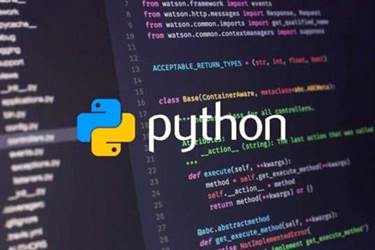The objective of a unified data cloth is to ensure that a company’s information is all the time accessible to all authorized events, no matter the place it’s stored. At Tableau, we consider that one of the best decisions are made when everyone seems to be empowered to put data on the middle of every dialog. We’ve infused our values into our platform, which supports information fabric designs with an information administration layer right inside our platform, helping you break down silos and streamline assist for the complete information and analytics life cycle. To understand the difference between an information cloth structure and knowledge warehouses or knowledge lakes, it’s important to grasp how data storage has advanced.

A information mesh manages information as a distributed network of self-describing information products. This comes with the understanding that the domain groups are closer to their information and thus perceive their data better. These challenges hinder organizations from shortly responding to business calls for. While not entirely new to the info landscape, these challenges have assumed larger importance as organizations attempt to speed up digital transformation. With an information lake, you have to lift all the information out of each system and cargo all of it into one new system (the lake). The information sits in the lake until you do transformation and evaluation work at a later date.
One of the advantages of data material adoption is how flexible it’s by method of knowledge delivery. It easily works with a number of information supply strategies, which assist its enterprise to accommodate a vast array of knowledge consumers, extending from conventional IT via finance and business. As technology turns into extra scalable and people are more related, the complexity and gaps in leveraging actionable insights increase.
Business Efficiencies
Many organizations have to manage the method of onboarding vendors, whether or not they are contracted employees, materials suppliers, etc. In this instance, for example a company desires to manage the granting of mental property (IP) to third events based mostly on their contracts with the group. In this article, we’ve explored what’s a data material, its primary elements, and the advantages of fashioning one on your organization.
- Metadata, for instance, can be utilized to trace who has considered a particular file and when, in addition to to detect delicate knowledge and apply information masking.
- What makes knowledge cloth distinctive is its ability to create a virtualized data layer on high of data sets, removing the necessity for the complex API and coding work that a knowledge mesh or information lake requires.
- BMC Software (BMC) helps companies harness expertise to enhance the supply and consumption of digital companies.
A centralized data structure is important because it helps you avoid duplication, and easily capture and analyze new knowledge. Data material architectures operate across the thought of loosely coupling information in platforms with functions that need https://www.globalcloudteam.com/ it. One example of knowledge fabric structure in a multi-cloud surroundings could seem like the below, the place one cloud, like AWS, manages knowledge ingestion and one other platform, corresponding to Azure, oversees information transformation and consumption.
So with knowledge mesh, when you avoid plenty of data engineering work, you trade it for additional software program improvement efforts dealing with the APIs. One of the primary advantages of a knowledge cloth is you could go away the data the place it at present sits right now and access it just as simply as if it have been living domestically in your applications. Through an built-in layer that sits on top of systems and information units, knowledge fabrics centralize your data in a single spot for you to entry, relate, and extend. You may also consider information fabric as an abstraction layer for managing your information. AI depends on strong and high-integrity information, but models are only as good as the data that’s algorithms are being fed.
Then, you may need a 3rd vendor, like IBM Cloud Pak® for Data, providing analytical providers. The knowledge material architecture stitches these environments collectively to create a unified view of information. That’s a key distinction between information materials and information warehouses or knowledge lakes. Particularly at occasions of aggressive disruption or financial recession, every Data Mesh and Data Fabric enterprise leader desires speed and suppleness. You can get much more worth from a data fabric structure by combining it with no-code information modeling tools that have record-level safety. Data fabric, a single-point data-processing architecture, connects all of an organization’s data sources and uses.
Every Little Thing You Should Learn About Fashionable Knowledge Catalogs
The last step is to provide users across the group with easy accessibility to the info. This can be accomplished by using information visualization, analytics and reporting tools, or by constructing data-driven purposes. Organizations can improve governance and compliance across unstructured and structured knowledge sources by accumulating and analyzing metadata.
Top data material advantages embody improved velocity and agility, democratization of information modeling, more actionable business insights, and centralized information management for improved safety and compliance. Instead, the organization uses an information cloth architecture to attach directly to each system while leaving the data in its current place. The result’s actual time knowledge and operational insights throughout your service request utility, the place customers can read and write directly to every source as if it were native information.
Information Fabric Vs Knowledge Virtualization Vs Information Federation
A information cloth could make it easier for users throughout the organization to entry and use knowledge, no matter where it’s saved or how it is structured. Data federation is much like knowledge virtualization because it gives a single, constant view of the information, however the means in which it does that is completely different. The consumption layer is in command of controlling how applications and techniques use information. It is usually made up of interfaces and APIs that enable applications and systems to entry and use knowledge as needed. Data is the lifeblood of a contemporary group, driving decision-making and propelling progress. Data classification ensures its vitality by correctly routing it for maximum effectivity and security.

Listen to this webinar as IBM and Gartner talk about the lengthy run and significance of data cloth and its core parts.
The first step is to identify all the info sources across the group, together with databases, functions and external sources. This will assist to know the info panorama and identify any information silos that exist. A information fabric can allow organizations to quickly and simply adapt to altering business wants and incorporate new knowledge sources, which can help to support innovation and business development.
But, they turn into simply one other node within the mesh, quite than a centralized monolith. Data material brings important capabilities to a process automation platform, because it connects information sets across various techniques, whether they’re on-premises or within the cloud. Look for a process automation platform that also provides low- or no-code connectors so you’ll be able to hyperlink those techniques (like CRM, ERP, and database applications) without building the connections from scratch. The ultimate must-have piece in a platform is a workflow orchestration layer, which directs and easily passes workflows between software bots and people.
According to Forrester, “an average of between 60% and 73% of all information inside an enterprise goes unused for analytics”.four Today’s businesses battle to close that hole. One of today’s largest enterprise challenges is determining how to shut the crucial gap between the out there information and information, and transforming as much of that data and data into sources like knowledge and insights. These insights are essential for creating personalised, compelling customer experiences, and leading edge services that enhance a business’ operational effectivity. Data fabrics provide a holistic view of knowledge, together with real-time information, decreasing the time required to find, query, and deploy progressive strategies and offering deeper information evaluation that creates better enterprise intelligence.
How To Reduce Time-to-market With Master Information Administration
With correct and timely visibility into its cash holdings, it has also elevated the rigor behind its threat management and mitigation strategies. Metadata activation and suggestion engine – The AI-powered CLAIRE engine learns your information panorama to automate hundreds of guide tasks. A knowledge fabric is made up of elements that can be selected and collected in numerous mixtures.
By automating (and augmenting) knowledge integration duties, knowledge scientists and data engineers can significantly cut back manual workloads. Optimized knowledge integration accelerates data supply and happens in real-time so knowledge is all the time in sync. With automated data governance and security rules in place, corporations stay in compliance and cut back the danger of data publicity.
This permits organizations to maximise the worth of their information and speed up digital transformation. A knowledge material strategy can unify disparate sources by bringing the information from the acquired company into the virtual information retailer with out having to switch legacy structure. While creating unified and harmonized information all the time requires some degree of effort, a knowledge cloth will enable for seamless and centralized information access inside and all through the complete enterprise. Data is mixed from totally different sources and types, to create a comprehensive single, digital source. Regardless of the applying, platform, or storage location, a data material structure facilitates frictionless entry and data sharing across a distributed infrastructure.
Data Material Use Circumstances
It permits customers to entry and share data seamlessly, regardless of the place it’s saved. Data mesh and data fabric architectures alike aim to abstract data administration complexity. Monolithic, legacy structure and centralized knowledge platforms thwart business agility and make it tough to shortly adjust to the ever-changing data panorama. New views, new aggregations and new projections of information (aka knowledge products) are wanted. Data fabric helps organizations manage big quantities of information that are saved somewhere else and have different knowledge sorts. They ensure unified data access, enable self-service and governance, and automate the data integration process.